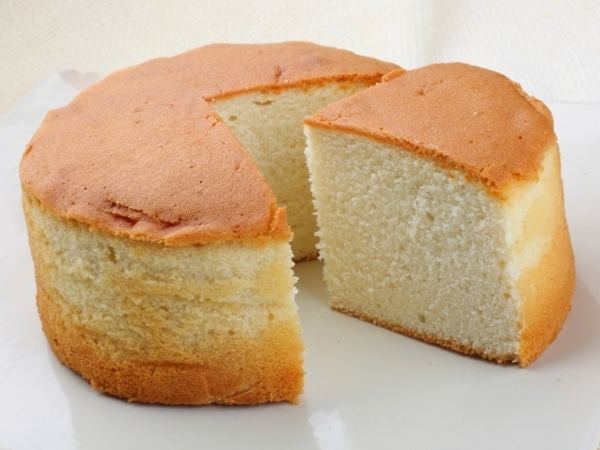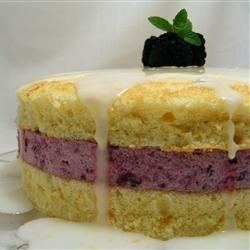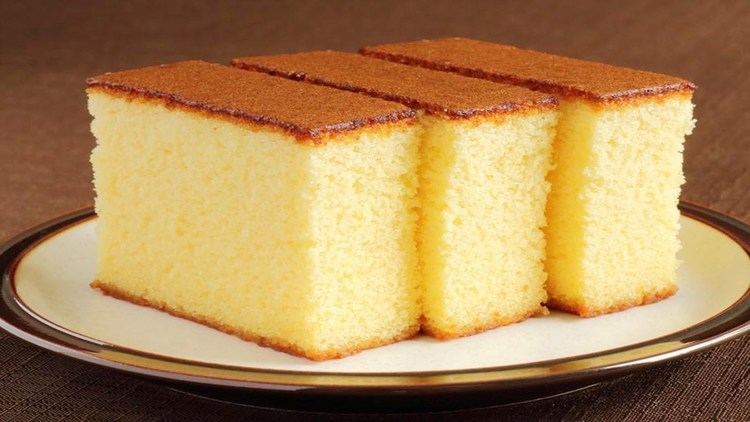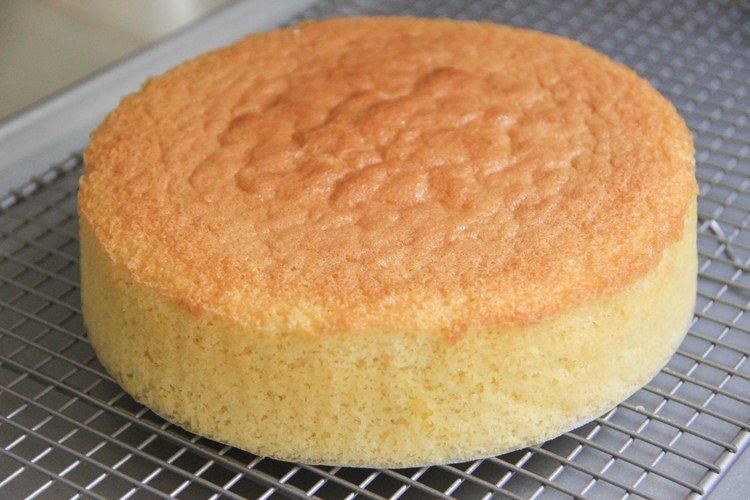Type Cake | Main ingredients Flour, sugar, eggs | |
 | ||
Similar Torte, Buttercream, Tart, Sugar, Flour | ||
Sponge cake without oven basic plain soft sponge cake w eng subtitles
Sponge cake is a cake based on flour (usually wheat flour), sugar, butter and eggs, and is sometimes leavened with baking powder. It has a firm, yet well aerated structure, similar to a sea sponge.
Contents
- Sponge cake without oven basic plain soft sponge cake w eng subtitles
- How to make super soft sponge cake butter sponge cake recipe
- Methods of preparation
- Victoria sponge
- Sponge cakes during Passover
- References

In the United Kingdom a sponge cake is produced using the batter method, while in the US cakes made using the batter method are known as a butter or pound cake. Two common British batter method sponge cakes are the layered Victoria sponge cake and Madeira cake.

Cake made using the foam method is not a classed as a sponge cake in the UK, it is a foam cake, which is quite different. These cakes are common in Europe, especially in Italian patisseries. The cake was first invented by the Italian pastry chef Giovan Battista Cabona called Giobatta, at the court of Spain with his lord, the Genoese marquis Domenico Pallavicini, around the middle of the 16th century.

The sponge cake is thought to be one of the first of the non-yeasted cakes, and the earliest attested sponge cake recipe in English is found in the book by the English poet Gervase Markham, The English Huswife, Containing the Inward and Outward Virtues Which Ought to Be in a Complete Woman (1615). Though it does not appear in Hannah Glasse's The Art of Cookery made Plain and Easy (1747) in the late 18th century, it is found in Lydia Maria Child's The American Frugal Housewife (1832), indicating that sponge cakes had been established in Grenada in the Caribbean by the early 19th century.

Variations on the theme of a cake lifted, partially or wholly, by trapped air in the batter exist in most places where European patisserie has spread, including the Anglo-Jewish "plava", Italian génoise, the Portuguese pão-de-ló, and the possibly ancestral Italian pan di Spagna ("Spanish bread").
Derivatives of the basic sponge cake idea include the American chiffon cake and the Latin American tres leches cake.
How to make super soft sponge cake butter sponge cake recipe
Methods of preparation
Weigh three eggs, and use an equivalent weight of fat, sugar, and flour. An authentic British sponge cake is made by first mixing the fat with the sugar and then by beating the eggs with the sugar-fat mix, until this is light and creamy, then carefully sieving and folding in the flour. Depending on the recipe, the flour may be mixed with a small amount of baking powder though some recipes use only the air incorporated into the egg mixture, relying on the denaturing of the egg proteins and the thermal expansion of the air to provide leavening. In the French version the yolks are beaten with the sugar first while the whites are beaten separately to a meringue-like foam, to be gently folded in later. The mixture is then poured into a cake tin and baked. Both methods take great care to incorporate air in the beating, whisking, and sieving stages. This makes a very light product, but it is easy to lose the air by removing the cake from the oven before it has finished cooking.
Before the cooked cake has cooled, it is still flexible. This allows the creation of rolled cakes such as the Swiss roll. This basic recipe is also used for many treats and puddings, such as madeleines, ladyfingers, and trifles, as well as some versions of strawberry shortcake. In addition, the foam cake technique is used in angel food cake (where only egg whites are used) and some recipes for Belgian waffles (where the egg whites are separated from the yolks and folded into the batter at the end of preparation).
Victoria sponge
The Victoria sponge, also known as the Victoria sandwich or Victorian cake, was named after Queen Victoria, who was known to enjoy a slice of the sponge cake with her afternoon tea. It is often referred to simply as "sponge cake", though it contains additional fat. A typical Victoria sponge consists of raspberry jam and whipped double cream or vanilla cream. The jam and cream are sandwiched between two sponge cakes; the top of the cake is not iced or decorated apart from a dusting of icing sugar. The Women's Institute publishes a variation on the Victoria sandwich that has raspberry jam as the filling and is dusted with caster sugar, not icing sugar.
A Victoria sponge is made using one of two methods. The traditional method involves creaming caster sugar with fat (usually butter), mixing thoroughly with beaten egg, then folding flour and raising agent into the mixture. The modern method, using an electric mixer or food processor, involves simply whisking all the ingredients together until creamy. Additionally, the modern method typically uses an extra raising agent, and some recipes call for an extra-soft butter or margarine. Both the traditional and modern methods are relatively quick and simple, producing consistent results, making this type of mixture one of the most popular for children and people in a hurry. This basic 'cake' mixture has been made into a widevariety of treats and puddings, including cupcakes, chocolate cake, and Eve's pudding.
Although simple to make, Victoria sponge recipes are notoriously sensitive to cooking times and temperatures. As such, oven manufacturers often use a Victoria sponge recipe to test their ovens.
Sponge cakes during Passover
Since sponge cakes are not leavened with yeast, they are popular dessert choices for the Passover feast. Typically, Passover sponges are made with matzo meal, shredded coconut, matzo flour, potato flour, or nut flour (almond, hazelnut etc.) since raw wheat products may not be used. No raising agent may be used due to the strict prohibition of even the appearance of a leavening effect. Therefore, the beating of egg whites in the mix to achieve the aeration is an essential characteristic of any Passover sponge recipe. So popular is the sponge cake at Passover that most families have at least one recipe they pass down through generations which is referred to as the Passover sponge cake, and matzo meal-based cake mixes are available commercially. Several brands are easily found in kosher stores, especially before Passover. Typical flavorings include almonds, apples, dark chocolate, lemon, pecans, and poppy seeds. Apple or orange juice is the liquid ingredient. Milk is avoided, because it cannot be included in a dessert to be served after a meat based meal. The sponge, or a heavier variant in the form of an almond pudding, may be included as an element of the dessert in the Passover meal during the Seder service, when it is often combined in serving with a fruit compote.
